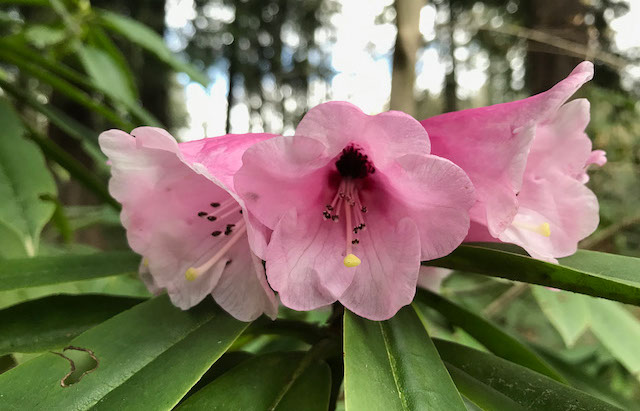
Rhododendron pachytrichum
In the March 2017 blog, I wrote about spring-flowering rhododendrons. I hope you’ll forgive me for returning to this subject, but I’ve seldom seen as extensive a bud-set on rhododendrons as they are providing us this year. Most visitors know that UBC Botanical Garden has an excellent collection of rhododendrons; at last count there were more than 400 different kinds. While distributed across the Botanical Garden, the vast majority reside in the David C. Lam Asian Garden and in the Asian section of the E. H. Lohbrunner Alpine Garden (Asia is the centre of diversity for cold-hardy rhododendrons). North American species are well represented, but are, by and large, late to flower, with few of them opening before May.
Barring another descent into the deep freeze—this is statistically, thankfully, an unlikely occurrence in March—we should be able to see a good number of rhododendron flowers this month. Sadly, several of our earlier-flowering species, including Rhododendron rirei and R. barbatum, were basking in December’s mellow temperatures, only to have their flowers and expanding buds (as well as some leaves and branches) killed in January’s sudden freeze. Still, some of the buds on Rhododendron barbatum, a notoriously tender, crimson-flowered species with bristly leaf stalks (barbatum means “bearded”), appear to have survived and will open as normal, but above more or less ruined foliage.
Across Lower Asian Way from R. barbatum is a large specimen of the florally-variable Rhododendron pachytrichum. This plant, which has unusually dull-dark-red flowers, is a 1908 Ernest Wilson collection from Sichuan (technically, ours is a vegetative propagation from one of Wilson’s original seedlings that was grown at Lamellen, a garden in Cornwall). Also flowering now is a more recent (1995) seed collection of the same species. There are plants of this collection on both sides of Maximowicz Trail near Lower Asian Way. Opening later in March or early April on Siebold Trail close to Stearn Trail is a pair of pink-flowering variants from a 1965 planting, and a number of pink-flushed, white-flowered specimens between Rock and Decaisne Trails. Behind the Wilson plant, visible from Decaisne Trail is a closely-related, early-flowering species, Rhododendron strigillosum. The intensity of its red flowers, as well as its beautifully curved and mid-rib-creased leaves, has made this species a favourite of hybridizers. Another relative, Rhododendron ochraceum var. ochraceum, is similarly red-flowered, but is a much smaller plant. The leaf backs have an ochre-coloured indumentum (ochraceum = ochre coloured). There are several plantings, including along Lower Asian Way south of Farrer Trail, along Upper Asian Way north of Fortune Trail and along Fortune Trail in the Azalea Dell. Here, visitors can also see the white-flowered Rhododendron moupinense hybrid, ‘Bric-a-Brac’, which is often in bloom as early as February.
Adjacent to Lower Asian Way between Beer and Decaisne Trails is a fine specimen of Rhododendron praevernum. This species is among the earliest of the larger rhododendrons to flower in this area (Latin: prae = before + vernum = spring). Its long, drooping leaves are the perfect foil for its big, raspberry-blotched, pink-budded white flowers. Our plant is about 3 m tall and across. The closely-related and somewhat broader-leaved Rhododendron sutchuenense (also from Sichuan) opens its purple-speckled pink flowers about two weeks later. Our best example is where Farrer Trail meets Flanagan Trail, below Lower Asian Way. A third close relation (these species are all Rhododendron fortunei relatives) is Rhododendron calophytum var. openshawianum, which has exceptionally narrow leaves and white or pink flowers. Like the later-flowering and more commonly grown R. calophytum var. calophytum, its large, bulbous flowers have a sizeable, pancake-shaped stigma (the pollen-receptive surface that tops the style, which is an extension of the ovary-enclosing carpel). Our earliest openshawianum is white flowered and situated at the corner of Upper Asian Way and David Trail. Another, slightly later-opening and pinker-flowered specimen sits in a group of rhododendrons, kitty-corner on David Trail.
Rhododendron coeloneurum is a large-growing species that flowers reliably in March. We have several accessions, each consisting of multiple individuals, but perhaps the most impressive group is located on Upper Asian Way immediately south of the Moon Gate. Pale pink, rosy-pink and violet-pink flowers are all common variations for this species. Note also that the lower leaf surface is coated in a pale, woolly indumentum, while the upper surface is attractively marked with veins (coeloneurum means “engraved veins”). Rhododendron principis, where Wharton and Henry Trails meet, is another March-flowering species. Besides its beautiful soft pink flowers, it’s worth examining the undersides of its leaves for their thick, marshmallowy indumentum. The name principis means “of first place.” A number of accessions of the yellow-flowered Rhododendron lutescens (lutescens = becoming yellow) bloom in the David C. Lam Asian Garden. The wide-opening creamy- to cadmium-yellow flowers with their spidery stamens are the perfect complement to the elegant lance-shaped leaves and willowy stems. Look for plantings on Kingdon Ward Way west of Henry Trail, on Lower Asian Way north of Kingdon Ward Way, and above Upper Asian Way north of Staunton Trail.
- Rhododendron barbatum
- Rhododendron ‘Bric-a-Brac’
- Rhododendron calophytum var. openshawianum
- Rhododendron coeloneurum
- Rhododendron coeloneurum
- Rhododendron lutescens
- Rhododendron ochraceum var. ochraceum
- Rhododendron ochraceum var. ochraceum
- Rhododendron pachytrichum
- Rhododendron pachytrichum
- Rhododendron praevernum
- Rhododendron principis
- Rhododendron strigillosum
- Rhododendron sutchuenense
Submitted by: Douglas Justice, Associate Director, Horticulture and Collections


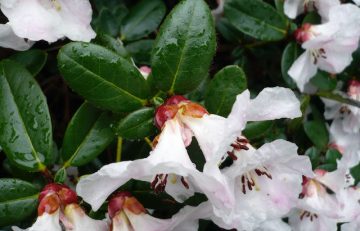
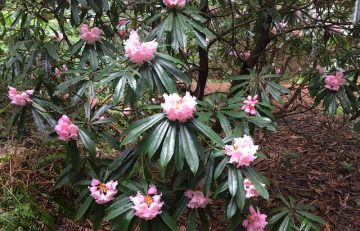
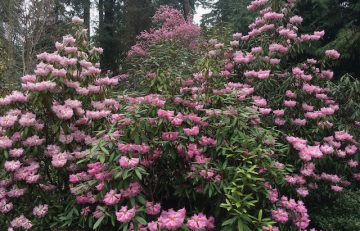
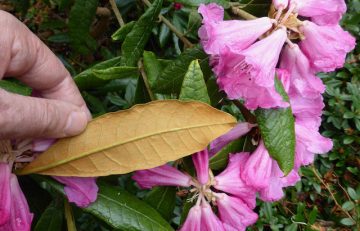
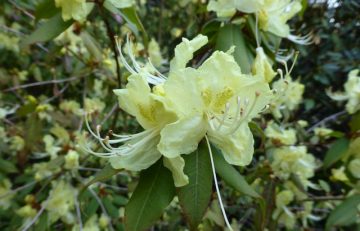

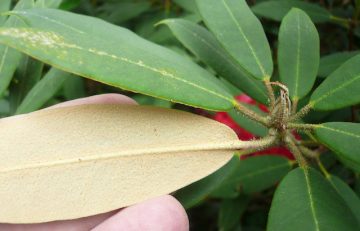


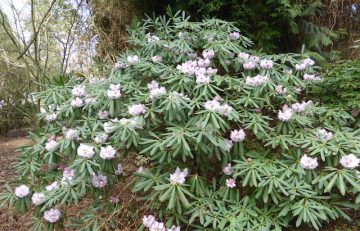
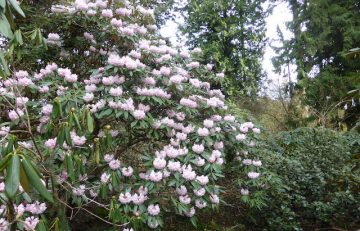
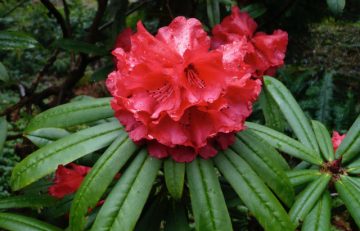

Nice walk about, wonderful photos to match the text
Thanks Doug, really interesting, I’ll have to visit the garden soon!